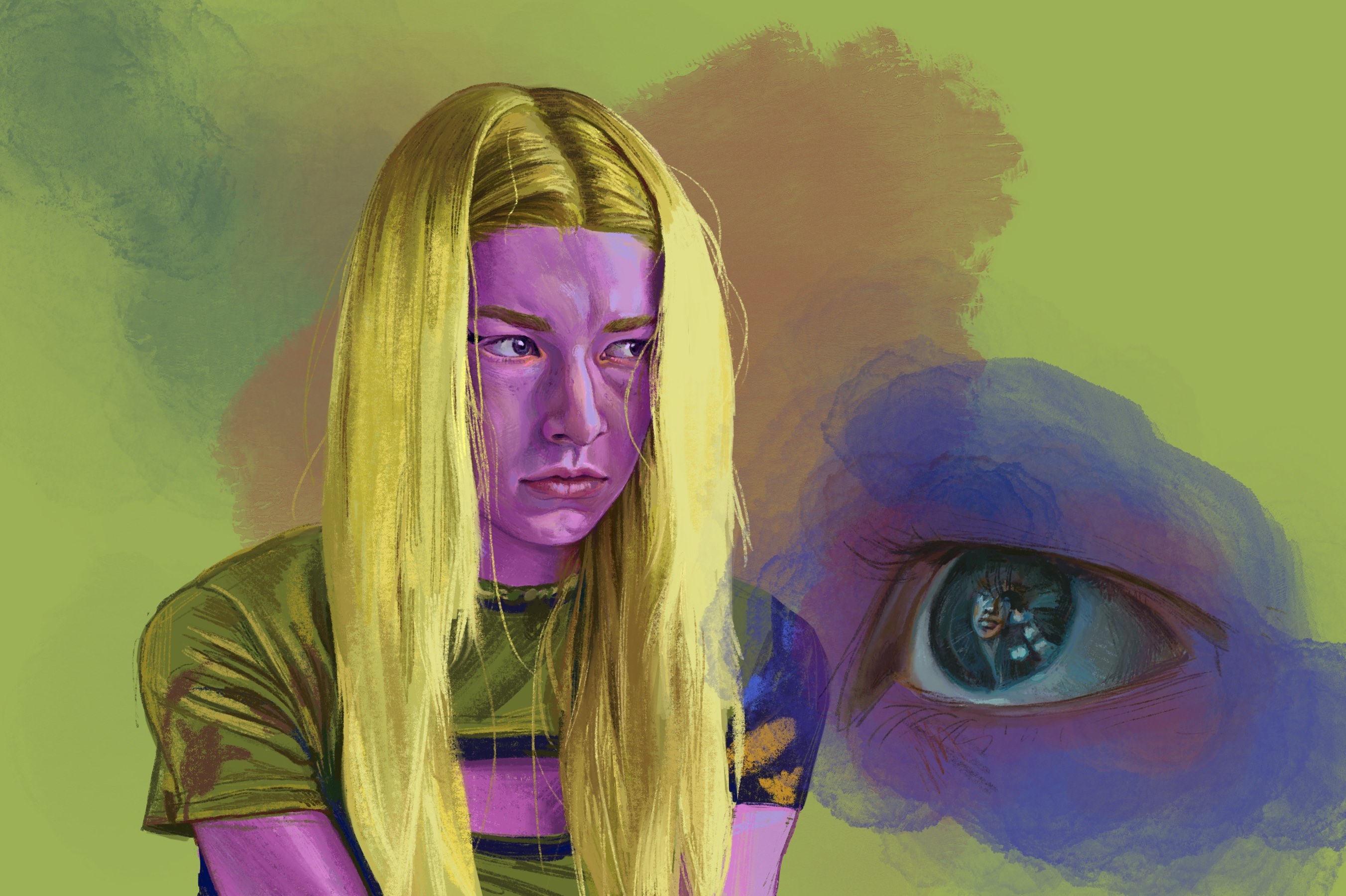Fans of HBO’s Euphoria were given two bridge episodes to stave off their hunger for a second season of the acclaimed show. Released on Dec. 6 and Jan. 24, respectively, the bridge episodes provided stripped-down character studies for the show’s protagonists and main couple: Rue Bennett (Zendaya) in “Trouble Don’t Always Last,” and Jules Vaughn (Hunter Schafer) in “Fuck Anyone Who’s Not A Sea Blob.”
After its initial release in 2019, Euphoria was lauded for its distinct visual style. Through innovative camera movements, eye-catching uses of colour, trendsetting makeup, and tons of glitter, Euphoria captivated audiences from its first episode. Global lockdowns in response to the COVID-19 pandemic in early March postponed production of the highly anticipated second season, but showrunner Sam Levinson gave fans two special bridge episodes to tide them over until season two could be filmed in all of its hyper-stylized glory. Levinson, who also wrote and produced Malcolm & Marie, the first feature movie filmed in quarantine, found a way to film safely in accordance with L.A. public health directives, which subsequently meant restricting the show’s eccentric visual style.
“Trouble Don’t Always Last” begins with the show’s star-crossed lovers in a scene that seems too good to be true—because it is. Jules is nowhere to be found, while Rue, relapsing on Christmas Eve, sits in a diner with her Narcotics Anonymous sponsor Ali (Coleman Domingo), eating pancakes and talking about life. The episode, which almost entirely takes place in a single diner booth, gives us an emotional look into Rue’s thoughts in a detailed account that departs from a typical fast-paced Euphoria episode.
Levinson gives brilliant monologues to both Rue and Ali, touching on everything from spirituality, Jules, and revolutions, though ultimately returning to Rue’s sobriety. Levinson’s stinging account of addiction comes from personal experience, with Rue’s narrative being semi-autobiographical to his own life. The episode features more dialogue-heavy scenes that would otherwise be absent in normal production—but Levinson used COVID-19 restrictions to his advantage to shape the narrative in a different but engaging manner.
Zendaya gives a stellar performance in this episode, portraying a vulnerability in Rue that viewers have never seen before as she decides whether her life is worth saving by sobering up. Domingo delivers a similarly remarkable performance, giving an emotional account of someone who tries to keep a positive outlook on life, despite losing his family to his addiction.
The second bridge episode, titled “Fuck Anyone Who’s Not A Sea Blob,” was released less than two months later. It functions as Jules’ redemption arc after some fans of the show labeled her as the series’ villain for her so-called toxic behaviour in her relationship with Rue. In this episode, Levinson allows the audience to see the world through Jules’ eyes and better understand the reality of what it’s like to love someone with an addiction.
“Fuck Anyone Who’s Not A Sea Blob” partially mirrors its previous episode in its one-on-one conversational structure, with Jules facing an identity crisis and speaking with a therapist. One of the episode’s compelling conversations stems from Jules’ thoughts on detransitioning, not because she no longer desires to be a woman, but because she fears she has crafted her femininity based on what men want. While the first episode practically features 50 straight minutes of conversation, “Sea Blob” uses flashbacks and dream sequences throughout the therapy session to give insight into Jules’ thoughts. While this formal choice provides some relief from exposition-heavy dialogue, the interspersed use of both flashbacks and dream sequences sometimes proves to be confusing—though this effect may be intentional, as viewers experience the same sense of disorientation that Jules feels.
While the pandemic is to blame for the scaled-down production of these episodes, audiences also have it to thank for them existing in the first place. Without the bridge episodes, we would have never had the opportunity to so thoroughly understand these complex characters.








